Dear friends and family,
The bike ride to Palomino seemed easy compared to the prior one, with only a few short hills at the end. Coming into town, I looked for Carreterra 6, meaning the boulevard rather than the street. This “boulevard” was a small dirt road off the main highway, complete with potholes you could swim in and homemade speed bumps of a thick stuffed rope like material. Another mile I rode down this very busy dirt road at a very slow speed in very hot sun. The road was lined with restaurants, souvenir shops, clothing stores, their version of delis and bars. And lots of people, white and black and brown of skin.
The mostly young backpack crowd was in the majority, coming and going from their hostels and the beach. Lots of skin showing, most of it attractive. Often, a budget backpacker can get a shared room and breaky (learned that from Stu, my Aussie backpacking friend-thanks Stu) for about 15 dollars US per night. I opted to pay two and a half times that for a private room, with bathroom. Even included a fan.
Very few Americans were in the group that I met at my place right off the beach. Mostly Europeans, Ausssies, and Kiwis. It’s kind of fun with the international group, even though they often wonder about America: “Really, no national health insurance and are you not afraid of getting gunned down with automatic weapons?” Every country leaves its impression on the world.
It was quite the scene, with half the young people doing their best to kill brain cells with alcohol and cigarettes and the other half staying fit and healthy for exploring. A very friendly group they all were, with nice conversations poolside and water volleyball every afternoon.
I joined Kate, Kate and Stu, the Aussies, for an evening of salsa lessons at two different bars. It took about ten minutes to be soaked with sweat, dancing in the heat, but It was fun learning the national dance. “Learning” is a bit of a stretch, as the instructions were coming at us faster than we could comprehend, in spanish, with the very loud music drowning out the instructor.
The next day, to explore further than the pool, I asked at the desk if they had a guided trip to an indigineous village with an English speaker. They told me they would try to find a guide and let me know later that they had one arranged the next day at 0800.
Rukmini, my guide, met me at the prescribed time with his 1983 Honda 250 dirt bike, that he said he never had to do any repairs to. It was well worn, and could have used some repairs, including the foot peg for the second rider. He looked in the gas tank and thought that he should make it to the village and back, which made me think it was a pretty long way, which it turned out to be. A half hour along the highway, holding my right foot up (broken peg) and wearing my fluorescent bike helmet, sticking out like a sore thumb compared to al the other riders without helmets. Think Jack Nicholson in Easy Rider with his football helmet.
Another half hour on a dirt road up into the foothills of the Sierra Nevada brought us into the entrance to a small village of dirt huts with palm roofs. Hearing the sound of our motorcycle the village “guard” came out of the first hut with his iPhone 15 in hand! He was very strict about our entering and wanted to know our intentions. When Rukmini explained that we only wanted to visit and observe, he took the peso equivalent of five dollars and waved us through. There were no other outsiders in the village the entire time we were there. It appears that they don’t restrict outsiders, just prefer to be left alone. I’m not sure why he had the phone, I assume to call the police if we had bad intentions?
I learned from Rukmini that this village was comprised of about 150 people and that they were doing what they could to grow it to keep their tribe, the KOGI, from dying out. They seemed to be doing a good job at growth as I saw many children wondering around. When a young girl reaches puberty, she is deemed ready to have children and I witnessed several very young (fifteen-ish) mothers with children. Often the Mamo, the spiritual leader, will arrange the marriage, but I understand that is not always the case. It seems that intermarriage within the village might be a problem, but my guide thought they were careful about cousins.
When a couple marries, the village people build them a new house. The houses are constructed of wood frames, held together with rope like vines and then filled in with mud. Metal in a house causes bad luck, so none is allowed. I saw several at various stages of construction.
We met a young man of nineteen years who invited us into his house. I had to crawl in, as the houses were designed to fit the size of the average KOGI, which is about five feet three for the men and shorter for the women. Inside were four hammocks and four benches with four legs, all carved out of one piece of wood.
A few cooking utensils, two machetes, an axe, a pick and a couple of T shirts and trousers.
All the villagers wear the traditional outfit: a cotton tunic for women and girls and a tunic top over rough trousers for men and boys, all originally in white, now heavily stained by the dirt everywhere.
This young man explained in spanish that he was ready to marry and that was going to be his house.
A young woman was finishing weaving a bag, not on a loom, but free form and after she tied the final knots, I asked if she would sell it. Her intended spouse took over the negotiation and I bought it. Each village has their signature type of bag. This village is known for very thin rope weave with very tight joining. Since I didn’t have the exact change, but approximately five dollars more, Rukmini asked if he could take a chair for the difference, which satisfied our negotiation. Now we could return on the motorbike with the two of us AND a chair, bungied behind me.
To be continued next post…
Sending love,
Charley
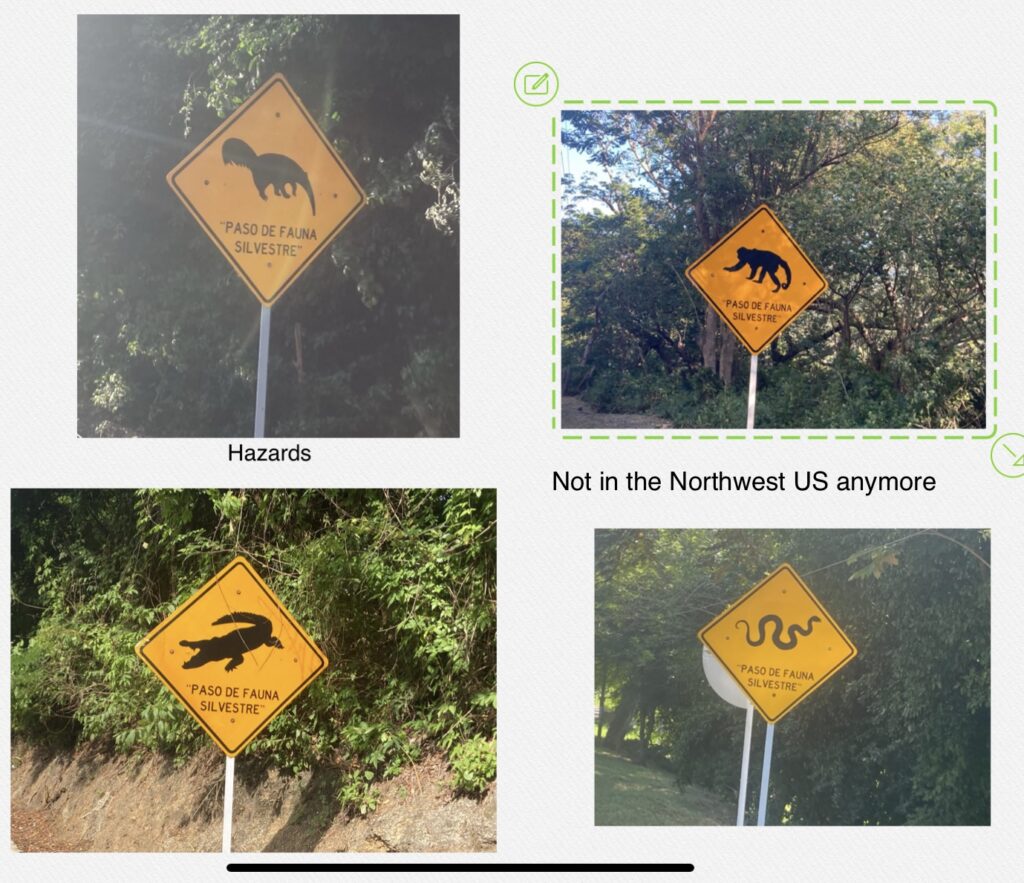
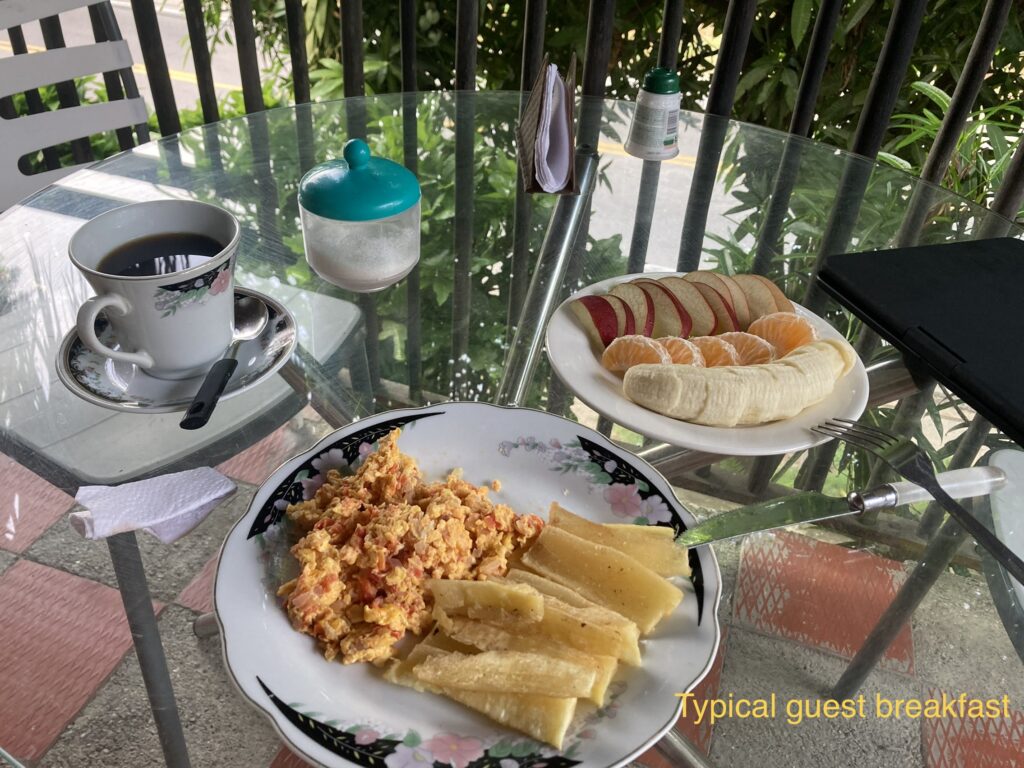

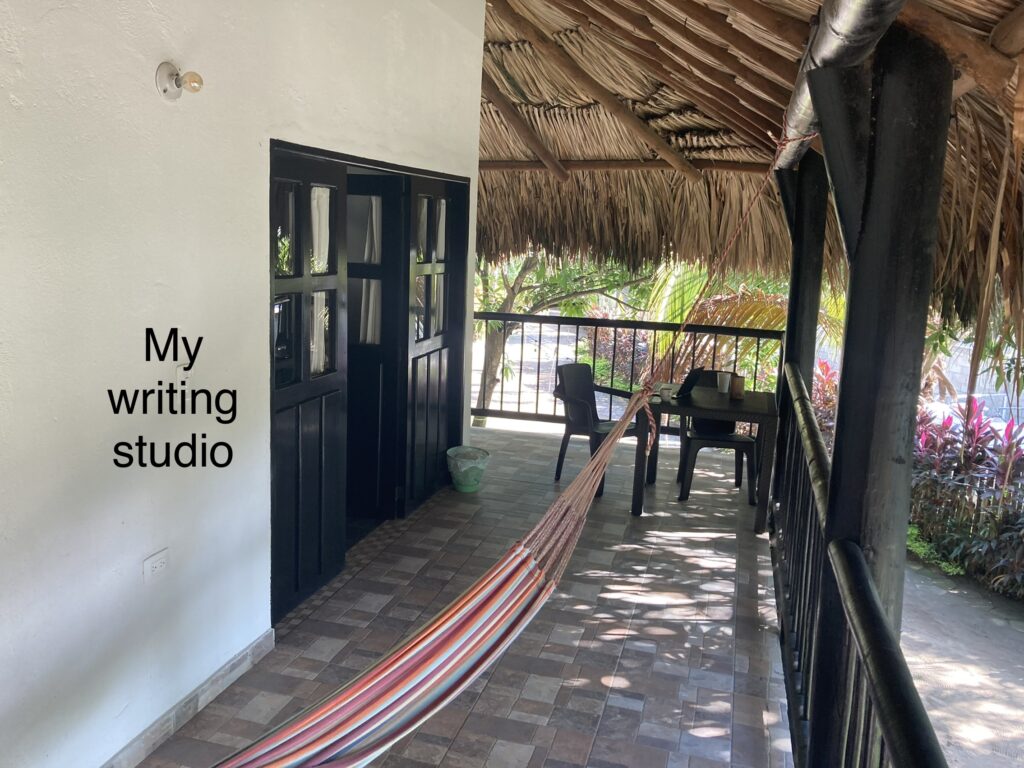
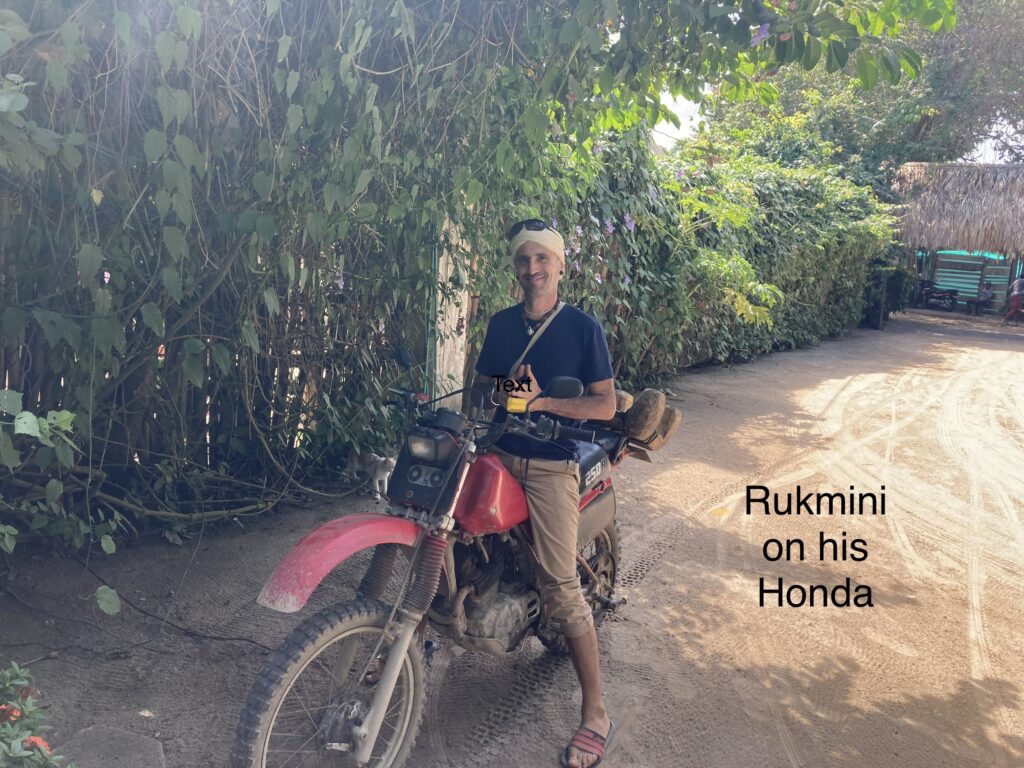
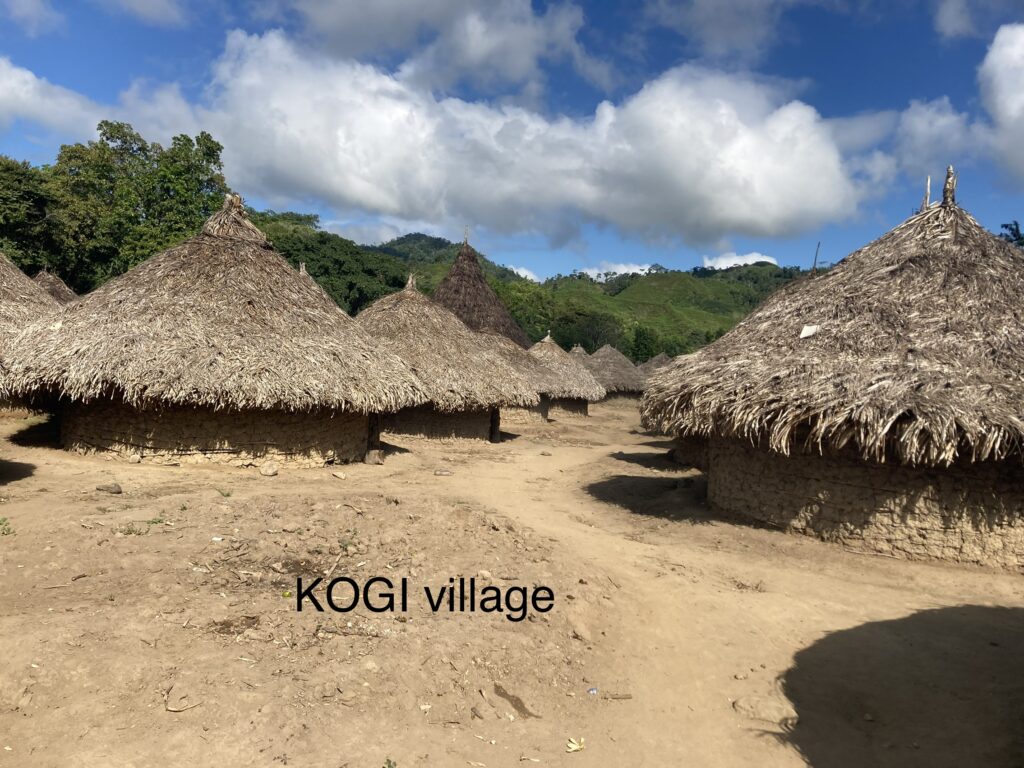
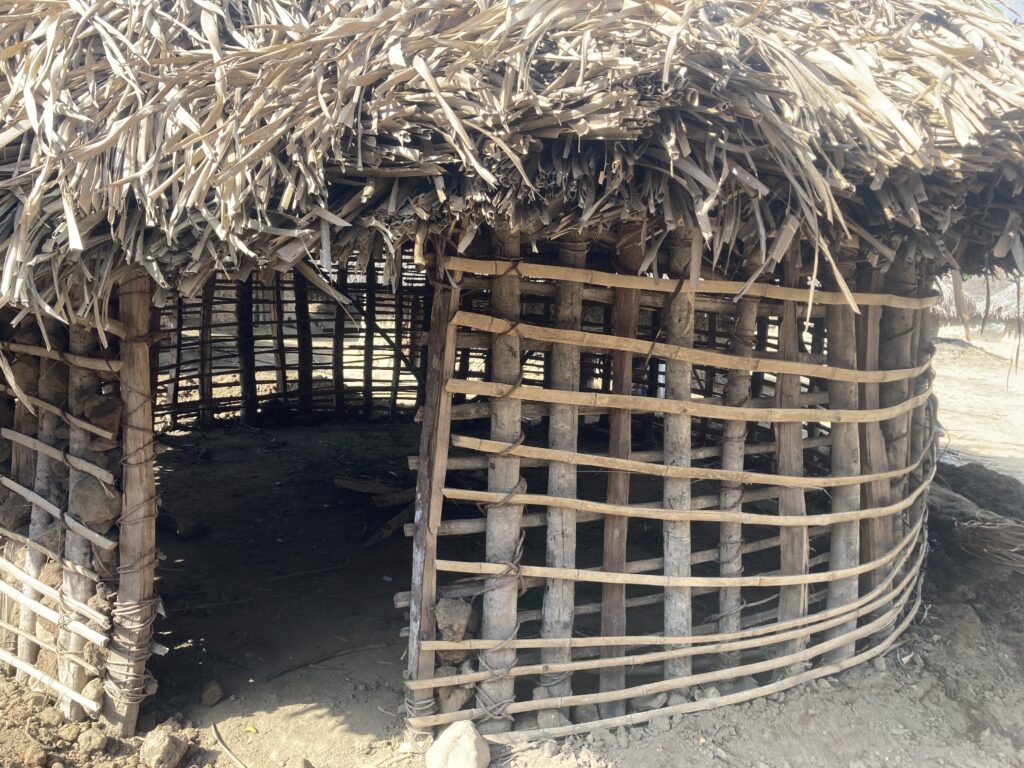
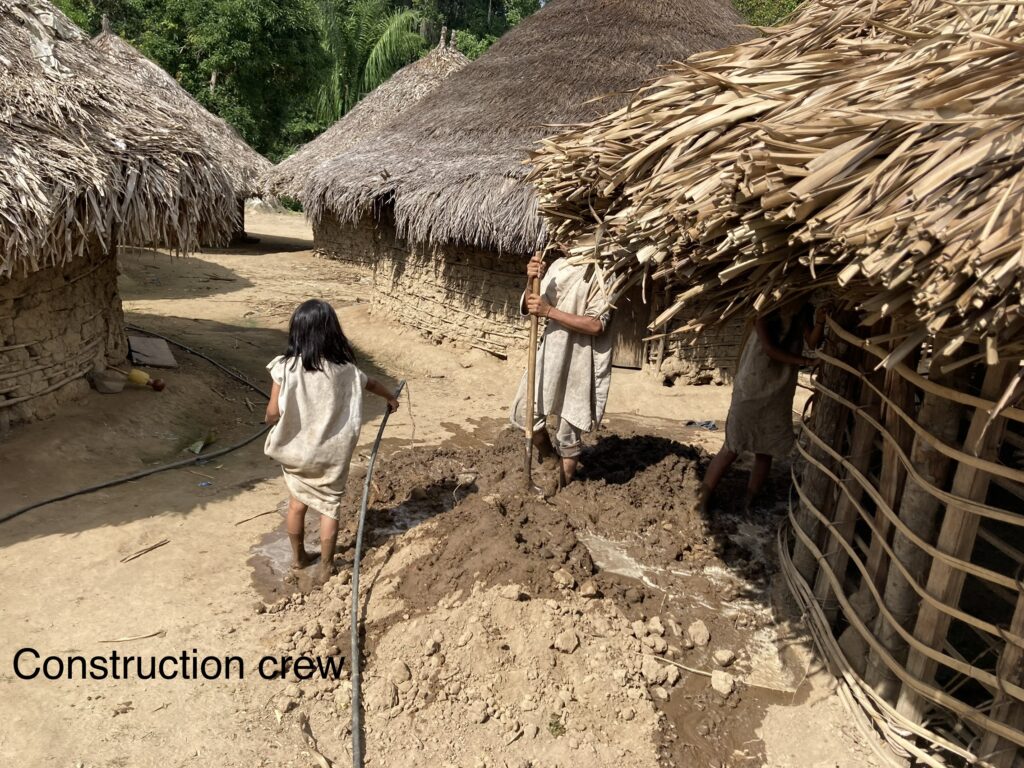
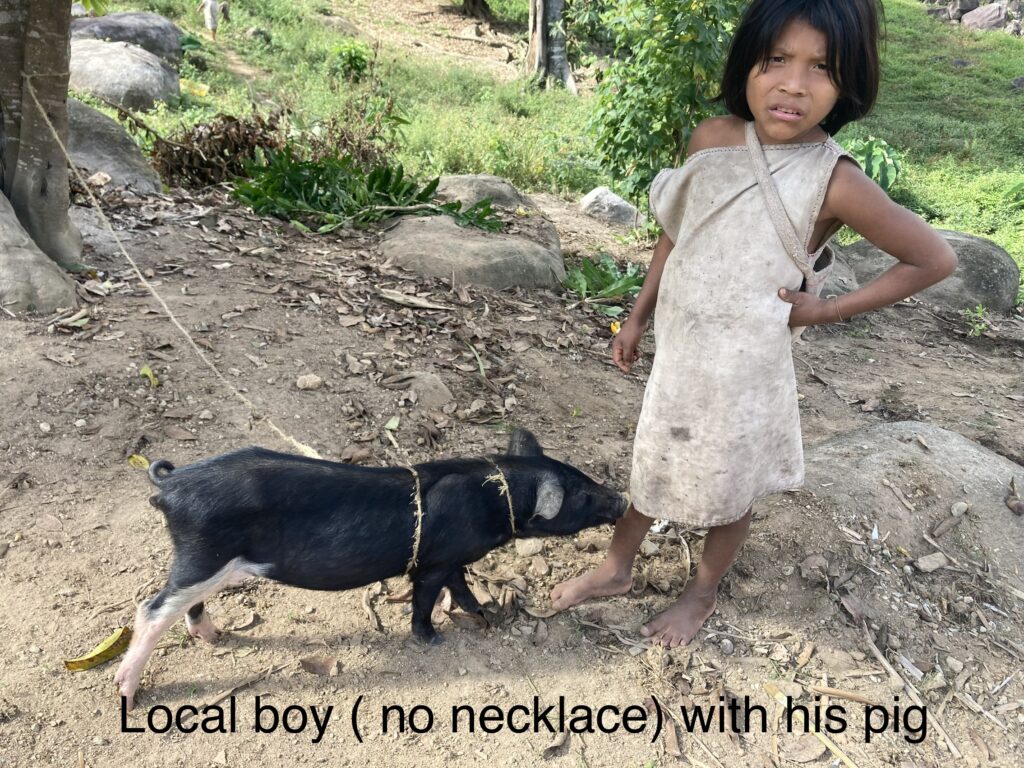
I guess you’re an anthropologist now. Very interesting, keep it up.
The rest of the family are anthropologists, might as well join in.
Love that you’re seeking out, and finding the real people and places! I know that you don’t exactly “fit in” but you’ve shown that Americans aren’t all AR-15-wielding sociopaths. I’m proud to have you as ambassador!
loving the posts! Safe travels Charley!
Thanks, Tom.
It’s a lot of responsibility when at the pool, but I might be up to the task.
Charley
Charlie, you should learn to walk on just your knees. You will fit in much better.
A very nice journey. Rurales are proud and happy with their lives. Tourism, business, and contribution help maintain their lifestyles. Enjoy the ride!
Hola Carlos –
We’re all with you in spirit – as you follow your curiosity and big hearted adventuring! We humans have become so fractured from simple living and a more “indigenous” way of being. Very proud that you’re taking time to give those communities your attention 🥰.
Hugs
Liz
Thank you Elizabeth